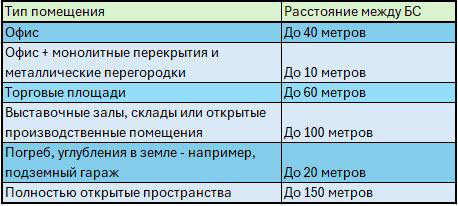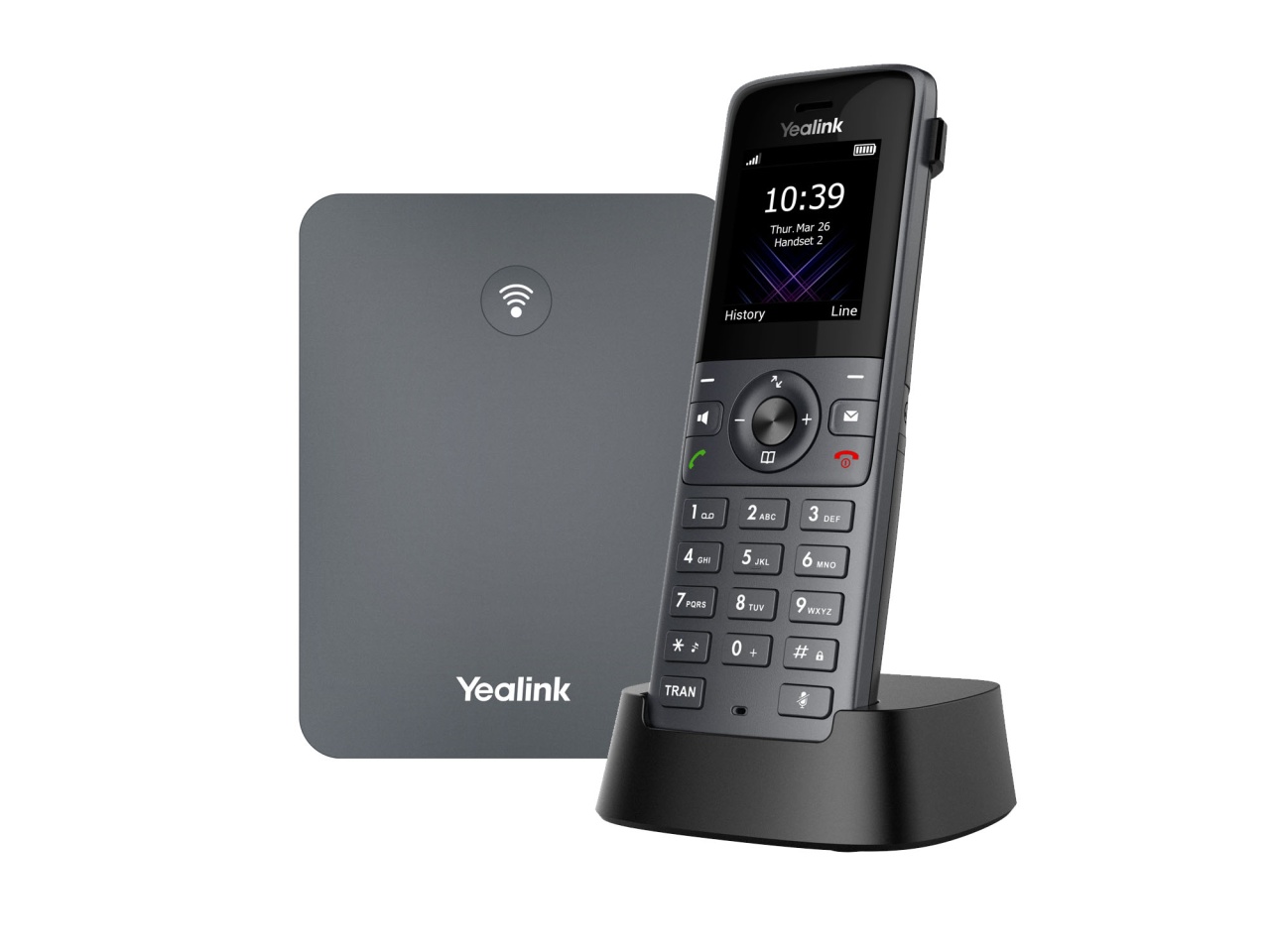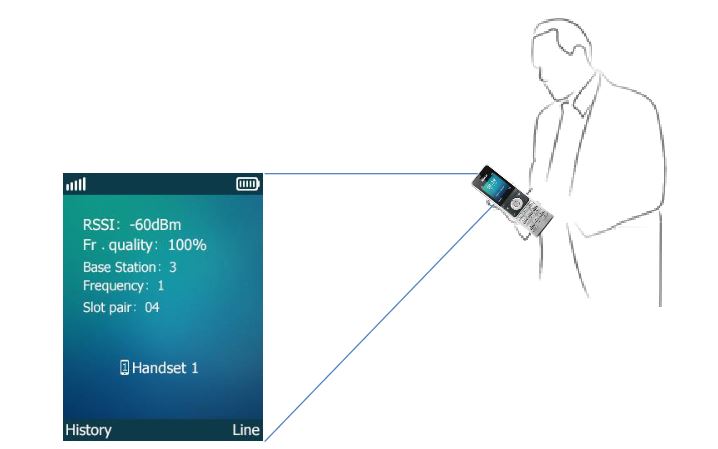gathering requirements and conducting radio planning
We continue the series of articles devoted to Yealink microcellular systems.
First article in the series
The second article is devoted to the features of working with the Yealink microcellular system at the stage of its implementation.
Implementation is the most important stage in building a stable, high-load microcellular DECT system. In this article we will look at next questions:
what is radio planning, why is it needed and how to carry it out;
how to correctly collect system requirements and not miss important points;
how to collect and analyze information about the characteristics of the radio signal, which allows you to better adapt the microcellular system, taking into account the characteristics of the object.
Gathering requirements and analyzing the premises
1. Gathering system requirements
Need to collect the following system requirements:
number of subscribers;
mobility of subscribers (whether handover is needed, intensity of movement of subscribers);
requirement for voice transmission quality (WB – wideband or NB – narrowband codecs);
requirements for handsets (use of a handset in conjunction with a headset – availability of 3.5 mm jack and Bluetooth, size and type of screen, shock resistance and dust and moisture resistance);
roaming and handover requirements;
what is the average call duration;
points of greatest concentration of people during certain periods of time (conference room, dining rooms, etc.);
presence/absence of other client requests.
2. Application of building plan requirements
At this stage, it is necessary to obtain a building plan and mark on it the planned coverage area, as well as the type and thickness of floor materials (special attention should be paid to metal and reinforced concrete). In addition, it is necessary to mark on the plan the areas with the most intense traffic.
3. Determination of the preliminary number of base stations and their placement points
Number of base stations (based on the number of subscribers and voice quality requirements) determined based on the number of active subscribers located within the range of one system segment where load distribution operates.
Important: when using broadband codecs (G.722 and Opus), the number of active handsets per base will be halved. That is, despite the fact that the number of simultaneous calls when using narrowband and wideband codecs is the same (up to 8), in the case of wideband codecs the “8 handsets per base” scenario is implemented by making 2 simultaneous calls from one handset.
It is also recommended to take employee mobility into account when calculating the number of handsets. You can additionally allocate about 20% of the system capacity for this or make an individual calculation.
Number of base stations (based on environmental conditions): number of base stations = [размер зоны покрытия (в квадратных метрах)] / 800
The recommended distance between two base stations depends on the environmental conditions that affect the radio signal.
The following table shows the recommended distance between two base stations for different types of premises:

Base station antennas are omnidirectional. All registered handsets can be at the same distance from the base station in all directions without significantly affecting the signal quality.
Nevertheless, The signal range may be affected by various environmental conditions.

Since base stations may interfere with each other, sufficient distance should be maintained between adjacent base stations. The minimum distance depends on actual conditions. If there are no obstacles between the devices, the required distance can be 5-10 m. If there are load-bearing walls or metal structures, the distance can be reduced to 1-2 m.
Base stations should not be placed in the corners of the room, at the junction of the wall and ceiling, near metal surfaces.
Carrying out radio planning
Sometimes, for relatively simple installations, this step can be skipped.
Simple installations mean systems with a small (up to 10 devices) number of base stations located in relatively open spaces (warehouses and sales areas without monolithic ceilings or metal partitions between base stations, open spaces).
When deploying a large system or system in a potentially challenging environment, conducting radio planning Necessarily.
Radio planning allows you to:
determine the structure of the system;
reduce the number of base stations;
identify and eliminate areas with weak radio coverage in advance;
at the preparatory stage, eliminate most problems, thereby obtaining a stably operating system at the launch stage.
Measuring kit
When carrying out radio planning, you can do without a measuring kit, but its use is strongly recommended.
Yealink provides a measuring kit for this purpose Yealink DECT IP Multi-Cell Deployment ToolKit 2consisting of a base station, a stand, 2 DECT handsets and other useful accessories for accurate detection of environmental parameters.

Measurement procedure
Approximate points for measurements are determined.
The base is placed on the first point (point A) and secured to the stand.
Tubes are connected to the base and must be in measurement mode. If the measuring mode is disabled, it can be enabled with the command *1234203#by entering it from the handset keypad (from standby mode). It is necessary to measure voice quality in several positions. The base does not move and is located at point A.
The specialist makes a call from one handset to another. The user of the second handset should move away from the location of the first handset, monitoring the signal level until it drops to a value outside the range of -27 ~ -95 dBm (W90B DECT sync: -90 dBm, W90B LAN sync: -95 dBm ).
After taking the measurement at the first point, the location of the second point (point 2) is determined. Measurements are taken at this point, and the procedure is repeated until the next point is determined (point 3, point 4, etc.). At these points there are handsets that are expected to be serviced by this base station (in the diagram – points 1-9, 11-14 for base station A).

When measurements have been taken for a given base position at all expected points, it is necessary to move the base to the next point for a new measurement step (B).
It is recommended to sketch or record the measurement results, for example:

Radio planning without measuring kit
For radio planning, you can use 2 standard handsets and 1 standard base station (e.g. W70B And W73H). It is necessary to connect both handsets to the base station and activate the measurement mode on them (*1234203#).
The procedure for taking measurements is similar to the process performed using a measuring kit.

Handset display in measurement mode
In addition to RSSI, the handset display shows several other indicators that can assist in radio planning.

RSSI: indication of received signal strength (dBm). Recommended value: -27 ~ -85 dBm (depending on the location of the measurement point).
Note: The RSSI value is displayed in dBm by default and can be changed to a percentage value.
Fr. quality: fraction of packets (%) received without errors. Recommended value: 100%.
Base Station: RPN (number) of the base station. Unique identifier of the base station to which the handset is connected.
Frequency: carrier frequency of the received signal. Value range: 0–30.
Slot pair: slot in the specific frequency range on which the measurement was performed. A pair of duplex slots (0–11) is used.
Handset N: handset name.
In the next article we will look at setting up, testing and running the Yealink microcellular system.
Follow our news!




